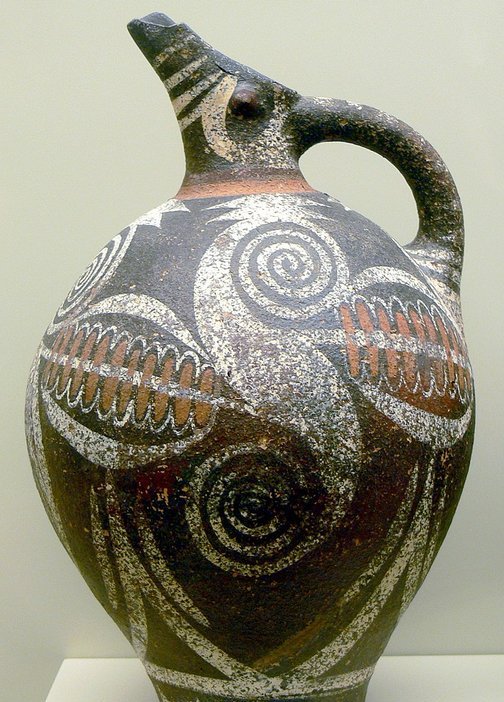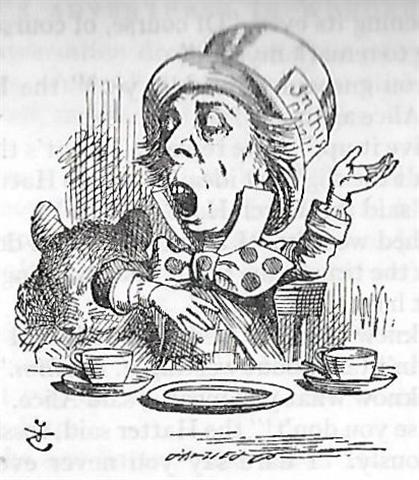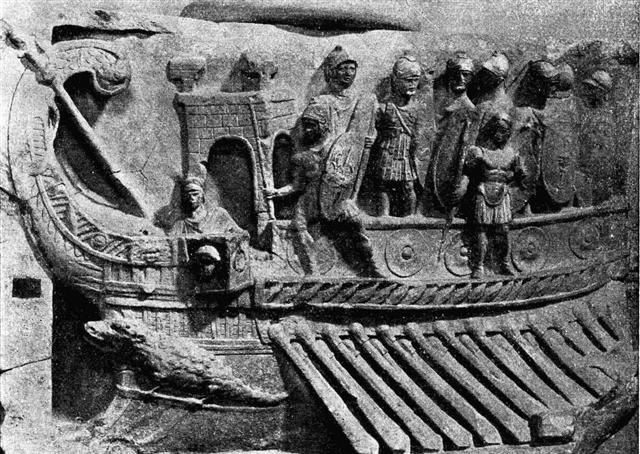|
RIGEL
Once again. Old Spider (→ 8 legs → nighttime) worked her magic, first by 'repeating a charm in order to open up the two shells of the clam and slip inside (→ Ca9-15)
and then by using one of her armpits in order to empower a pair of snails. The first became the Moon and the second became the Sun.
She lay down and slept for 3 days when empowering the Moon snail and likewise when empowering the snail of the Sun. 3 + 3 = 6 and MARCH 17 (LIBERALIA) + 6 = MARCH 23. Thus the 'snail' which became the Sun could evidently refer to Antares:
Here we should remember the Mad Hatter's Tea-party, because the Tea-pot asterism contains Nash, down there in the Milky Way:River: ... 'I wan't a clean cup', interrupted the Hatter: 'let's all move one place on.' He moved as he spoke, and the Dormouse followed him: the March Hare moved into the Dormouse's place, and Alice rather unwillingly took the place of the March Hare. The Hatter was the only one who got any advantage from the change; and Alice was a good deal worse off than before, as the March Hare had just upsed the milk-jug into his plate ...
'Twinkle, twinkle, little bat!' // How I wonder what you're at!' The Rat (↔ Bat) was in the Chinese system associated with a Girl:
... On February 9 the Chorti Ah K'in, 'diviners', begin the agricultural year. Both the 260-day cycle and the solar year are used in setting dates for religious and agricultural ceremonies, especially when those rituals fall at the same time in both calendars. The ceremony begins when the diviners go to a sacred spring where they choose five stones with the proper shape and color. These stones will mark the five positions of the sacred cosmogram created by the ritual. When the stones are brought back to the ceremonial house, two diviners start the ritual by placing the stones on a table in a careful pattern that reproduces the schematic of the universe. At the same time, helpers under the table replace last year's diagram with the new one. They believe that by placing the cosmic diagram under the base of God at the center of the world they demonstrate that God dominates the universe. The priests place the stones in a very particular order. First the stone that corresponds to the sun in the eastern, sunrise position of summer solstice is set down; then the stone corresponding to the western, sunset position of the same solstice. This is followed by stones representing the western, sunset position of the winter solstice, then its eastern, sunrise position. Together these four stones form a square. They sit at the four corners of the square just as we saw in the Creation story from the Classic period and in the Popol Vuh. Finally, the center stone is placed to form the ancient five-point sign modern researchers called the quincunx ...
|
|||||||||||||||||||||||||||||||||||||||||||||||||||||||||||||||||||||||||||||||||||||||||||||||||||||||||||||||||||||||||||||||||||||||||||||||||||||||||||||||||||||||||||||||||||||||||||||||||||||||||||||||||||||||||||||||||||||||||||||||||||||||||||||||||||||||||||||||||
















